
Don’t Hate the Selfie!
What Can We Learn From Selfies?
” A selfie is a certain type of self-portrait photography shot with a digital camera or smartphone. Selfies are typically of-the-moment images, require little to no planning, and usually occur in domestic settings such as the bedroom or bathroom.
When shot with friends, they become a group selfie. Rarely are selfies associated with a couple unless they happen to dress like twins, actually be twins, or present as some variation of partners in crime. Selfies are often uploaded immediately to social networking sites, but they may also stay on a user’s smartphone until they are discovered by the cops, as was the case of two Swedish adolescent girls who took a selfie before robbing a fast food restaurant. ” Alicia Eler
These informal snap-shots reflect the technological immersion of our young people, their obsession with social media and sometimes hints at a life being played out online (where some kids are actually more comfortable).
Students have told me that value the control they can exercise over their own image and the way the are presented. Powerful stuff. They also feel that a selfie can allow them to document a moment in such a profoundly personal way that it is almost as if without this concrete ‘evidence of presence’, the reality of experience is somehow diminished. It’s interesting that in this ‘digital age’ photographs are rarely printed, and yet ‘selfies’ can contribute to a sense of ‘reality’ and ‘permanence’. It’s only in part about the photo itself – selfies are sent shared, almost always constructed to involve others.
But are our students really aware of the impact and impressions can leave on their viewers? Do they really understand the medium and the ideas and messages they create visually? Opportunities to dive into some rich learning and tap into visual literacy, semiotics, etc start here!
I’m also keen to leverage their interest in photography, even in this most raw and most informal genres, for art-making. Some of my students take hundreds of images a day on their mobile devices, so surely there are entry points for teaching the elements of art, exploring ways of seeing and engaging with the creative process amidst the ‘duck faces’ (see, I’m down with the kids!)? Comparing and contrasting the purpose and construct of selfies and the self-portraits of the old-masters presents opportunities to explore art-making across time, periods and continents.
It’s important to remember that self-portraits are not new – although selfies were born when the phones became cameras and connectivity allowed instant sharing through FaceBook, Twitter, Instagram, etc, is the selfie really much different in terms of self-expression…?
Article: Saying Yes to the Selfie!
HYPERALLERGIC — People online have a lot to say about selfies: love them, hate them, feel indifferent about them, think they’re part of internet culture, a place we escape to, meld with our offline lives (making for a fluid but often fraught IRL-URL existence), something we learn from.
If the selfie is the ultimate mirror in our internet house of mirrors, and we can frame our photos and curate ourselves as we want others to see us, then surely the selfie is an act of taking back the gaze.
We look through the reversed mirror of the iPhone, into an actual mirror (camera flash reflection optional), or gaze longingly into a computer webcam. We self-consciously perform these moments from inside our private, domestic spaces, for ourselves and for our internet friends and “friends,” who are also voyeurs. They are our voyeurs, and we willingly welcome them into our curated worlds.
Yet the idea of self-portraiture is nothing new, nor is the act of people across the gender spectrum — adolescent and otherwise — photographing themselves. Does Cindy Sherman shoot selfies, self-portraits, or just cultural representations of women? Was Claude Cahun’s “Autoportrait” (1928) of herself looking androgynous in a black-and-white checked robe, appearing as a duality — a reflected version of herself in the mirror and a straight capture of herself confronting the camera — actually just a selfie?
Read the complete article from Alicia Eler at Hyperallergic
Selfies for Learning
Opportunities to use selfies as a starting point for conversations, art-making and learning abound in the classroom. Some ideas:
* Why do you take selfies?
* Is there a relationship between self-portraits, selfies and vanity?
* Are you ‘different’ in your selfless? How/why?
* What is the difference between taking a selfie to convey meaning, versus using text and talking?
* When are selfies interesting, intriguing? What makes you look at or share someone elses’ selfie?
* How could a selfie be used to create change?
* What is the difference between selfies and self-portraiture?
* Is a selfie about you, the viewer, both…?
* Are selfies an attempt to change how others see you?
* Is the proliferation of selfies online affecting the way we interact with each other and/or our relationships?
* What affect does the ‘public’ nature of selfies and sharing have on the image and our perception of it?
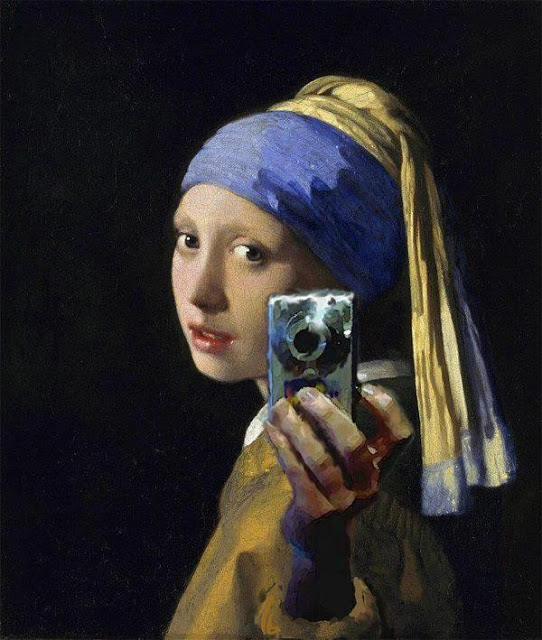
Girl with a Pearl Earring and a Silver Camera. Digital mashup after Johannes Vermeer, attributed to Mitchell Grafton. c.2012.
Article: Why Selfies Matter
TIME: Whether it’s the duckface smirk or the coyly suggestive close-up, selfies are a mainstay of Twitter and Instagram and have parents and psychologists wringing their hands over what they “mean.”
Some social scientists lump the selfie trend — which is most popular among younger social media users — into the larger narcissism that they say is more prevalent among today’s preteens and adolescents, arguing that the self-portraits are an extension of their self-absorption, while others view it as nothing more than an outlet for self-expression, which just happen to be shared more publicly via the communication mode of our times — social media.
But how aware are young children, or even teens, about the impression that their selfies leave? Do they appreciate that with their likenesses, they are often sending strong visual messages — some even suggestive — that they might not want conveyed?
Dr. Pamela Rutledge, director of the Media Psychology Research Center, believes that parents and experts are over-analyzing the selfie. First, she says, they aren’t really that new. As she points out in her column for Psychology Today, the term selfie was defined in UrbanDictionary.com in 2005. But now that more people have cell phones with cameras, they’re just more prevalent.
“The way kids think about technology, media and communication is much different than people even 10 years their senior,” she says. “Technology is changing so fast that even small generational gaps are meaningful in how we view ‘normal.’”
Developmentally, selfies make sense for children and teens. And for the most part, they are simply reflections of their self-exploration and nothing more. “Self captured images allow young adults and teens to express their mood states and share important experiences,” says Dr. Andrea Letamendi, a clinical psychologist and research fellow at UCLA. As tweens and teens try to form their identity, selfies serve as a way to test how they look, and therefore feel, in certain outfits, make-up, poses and places. And because they live in a digital world, self-portraits provide a way of participating and affiliating with that world.
But even though taking selfies is a part of growing up digital, that doesn’t mean all self-portraits are okay. Like all behaviors that children and teens test out, parents should help them to learn the limits and guidelines for which types of pictures are acceptable and which are not. It’s not likely that pre-teens and even adolescents think beyond seeing the images as a type of developmental skin that they try on and shed, for example, but they do need to be aware that their actions may have consequences. “Kids only have awareness within the context of their experience. Expecting teens to understand what something “means” to an adult is about as reasonable as expecting an adult to understand what it means to the teen,” says Rutledge.
That includes whether others will perceive the pictures as suggestive or too indulgent. Rutledge says that it’s important for mom and dad to remember that finding and establishing this threshold of appropriateness may be particularly challenging since it could be different for each adolescent. But such discussions are likely the most positive way to solve the issue — explaining to a child what “questionable” selfies are — why it’s not acceptable to send out a sexually suggestive picture — is more constructive than blocking their Facebook account or taking away their phone, she says.
But increasingly, other experts say that selfies can also be a window into deeper adolescent issues. With Facebook becoming a prominent resource in young people’s’ therapy sessions, they could provide a useful jumping off point for addressing a teen’s or young adult’s self-perceptions. In cases where the patients find it hard to open up about issues, selfies could be a way for therapists to break the ice and start a dialogue about what the teen was feeling when the self-portrait was taken, or why he snapped the picture in the first place. “Scientific studies are gathering more information about the use of social media to help professionals recognize these as avenues to identify, support, and help young folks who may otherwise not receive this kind of attention,” says Letamendi. “Psychologically speaking, there may be some benefit to participating in sharing selfies because this practice is interwoven in our social culture and is a way to interact socially with others.”
Even apart from situations where selfies can inform emotional or behavioral problems, for example, the material that children and adolescents view online — selfies included — can be influential in molding their sense of self. Research has shown that adults make emotional connections to what they see posted online, and that their behaviors and decisions are influenced by how peers in their social network are interacting. People often feel envy, loneliness and generally worse about themselves after perusing their friends’ party pictures, for instance, and the latest research, published this week in the Journal of Adolescent Health, suggests that teens are more likely to engage in risky activities like smoking and drinking if they see their friends doing it in photos.
That’s not surprising, given the ubiquity of social media influences in our lives. But it’s worth studying, those in adolescent development say, to better understand how these social contributors are shaping the next generation, for better or worse.
Read the entire article, ‘Why Selfies Matter’ by Alexandra Sifferlin at TIME
See! Selfies aren’t really new…
GIZMODO “We don’t know the identity of the mystery man in these photos, but, starting in the photobooth boom of the 1930s, he began snapping black-and-whites of himself. Thirty years later he had hundreds of nearly identical shots, and now the entire collection is being shown to the public for the very first time. This is some Amélie-in-real-life biz, and hoo-boy it’s fascinating.
Photo historian Donald Lokuta found the set of silver gelatin prints at an antiques show in 2012 with little context, and began trying to track down more info about this middle-aged muse. He got in touch with Näkki Goranin, author of American Photobooth, who, in a strange twist, also owned a handful of images featuring his face; but ultimately they weren’t able to unearth anything beyond the fact that, at some point, the batch was bought from a Michigan dealer.
So what the heck was his obsession? Why was he repeatedly sitting in the spotlight and staring straight into the camera? Lokuta reckons this guy might have been a technician, testing out the equipment with a quick pic—which, c’mon, are you kidding me?? It’s almost impossible to believe Jean-Pierre Jeunet hadn’t also seen these before writing the twee screenplay for Amélie, because this is so on the nose.
Except! Instead of ripping up the evidence and tossing it into the nearest trash, this fella kept them all. Which raises even more questions: Was it a long-term creative project? A casual but persistent picture buff? Vivian Maier’s long lost soulmate?
At this point, it’s impossible to know whether he would be delighted, overwhelmed, or otherwise that these will be viewed—and analyzed—by people across the world as part of Rutgers’ Zimmerli Art Museum Striking Resemblance: The Changing Art of Portraiture exhibition. Here’s hoping he’d be genuinely thrilled, because this is precisely the kind of thing that gets imaginations running on overtime and all kinds of feelings flowing.”
Read the entire article from Jordan Kushins on Gizmodo.
Sochi’s Giant Pinscreen Wall is Hypnotic in Action
GIZMODO “British architect Asif Khan’s MegaFace art installation was teased well before the athletes had even arrived in Sochi. But now that the Winter Olympics are well under way, we’ve finally got footage of the giant automated pinscreen in action—and it’s even more awesome than we’d hoped.
Over 10,000 colored pistons move in and out by up to six feet to recreate the faces of visitors who’ve had their portrait snapped in 3D in booths located around the city. And at over 26 feet tall, each representation is actually larger than the Statue of Liberty’s face.
Over the course of the Olympics it’s expected that over 170,000 faces will be rendered on the massive wall, and originally its creators had dabbled in using the color-changing LEDs to accurately recreate each person’s skin tones. But the results ended up being so creepy and lifelike they decided to abandon that approach for something more artistically interpretive.”
MegaFaces: Kinetic Facade Shows Giant 3D ‘Selfies’ from iart on Vimeo.
This selfie trend is next level…
BORED PANDA “People have begin wrapping their faces in scotch tape (or sellotape for our UK readers) in what is probably one of the weirdest internet trends within recent memory. After wrapping their faces up with clear tape and distorting their features, they take a self-portrait and share it with their friends.”
Epic Selfies!
Yep, now we are using drone to take ’em!
SO BAD SO GOOD “Braving heart-stopping heights atop soaring towers in Dubai, Alexander Remnev took what has to be the most breathtaking selfies of our selfie saturated generation. And the video he shot is pretty killer, too.
The nineteen-year-old Russian photographer just can’t seem to help himself when it comes to exploring roof tops. While in Dubai on vacation, he climbed 20 roof tops with his buddies. And yes, one of those roof tops was the Princess tower, the famous 101 story sky scraper which holds the record for tallest residential tower in the world.” Read more at So Bad So Good
Developing Selfie Style and Sharing
LAUGHING SQUID: “A “Donut Selfie” is a video technique developed by Karen X. Cheng where a person records video of themselves while moving their smartphone in a circular “donut” motion from one side of their head to the other. Videos taken this way can then be edited together in a series. Cheng has launched DonutSelfie.com, a site which includes tutorial videos for shooting and editing donut selfies, as well as a place for users to submit their own examples.”
One last resource…


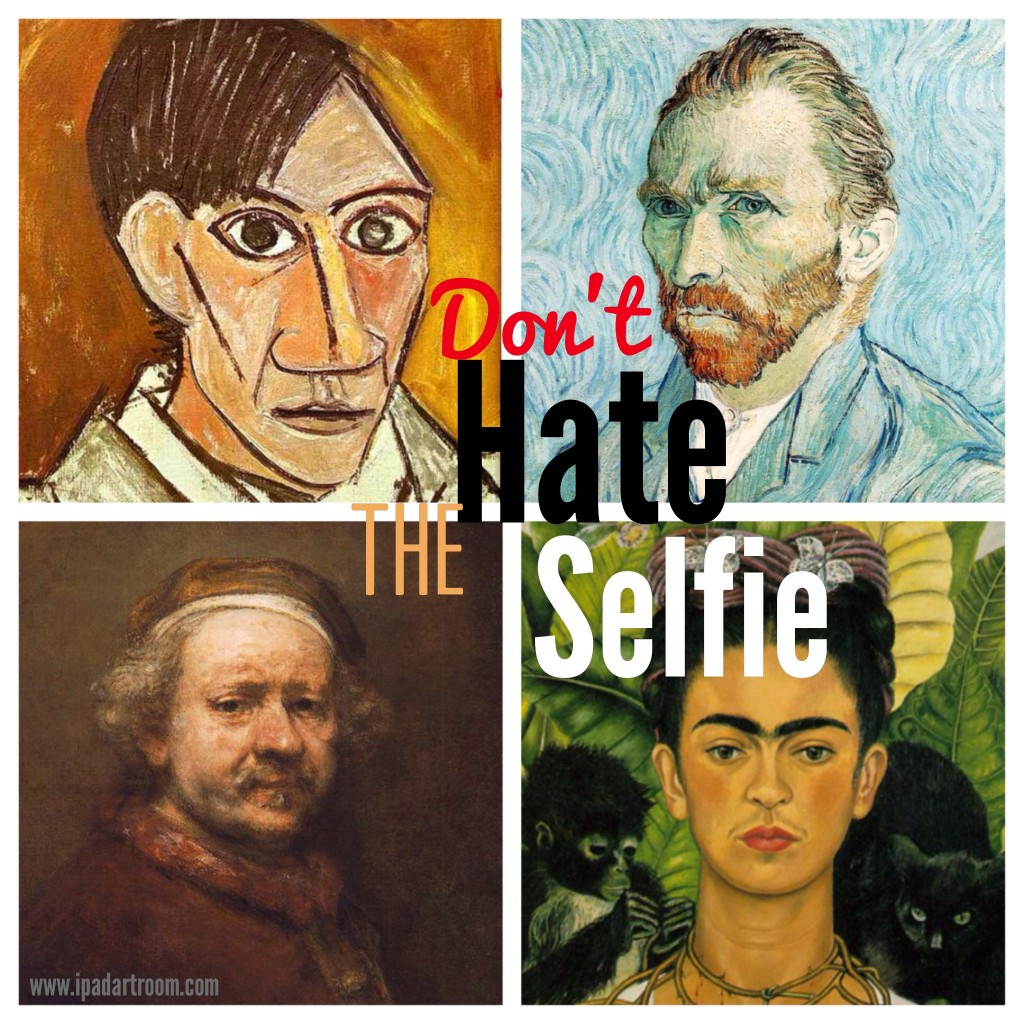
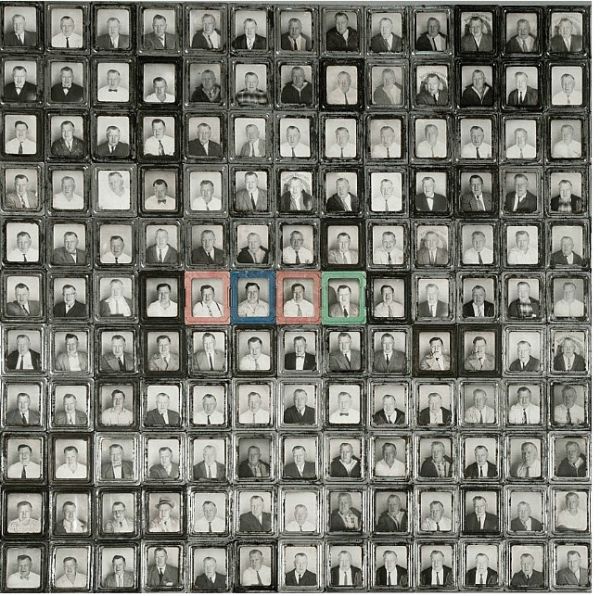
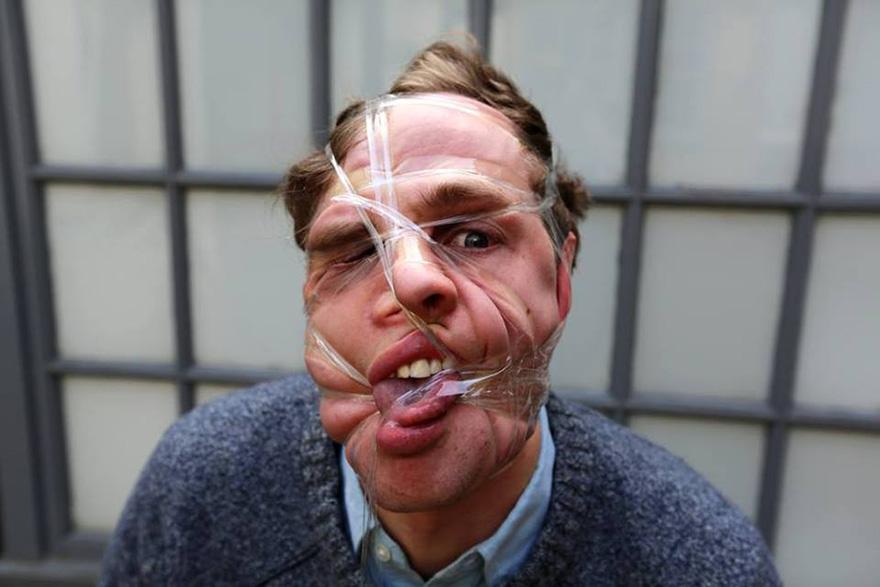
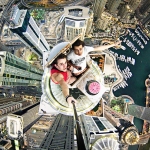

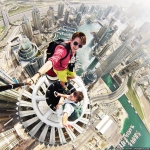














Pingback: Don’t Hate the Selfie! | iPad Art Room | ...
Pingback: Don’t Hate the Selfie! | iPhoneography-To...
Pingback: Don’t Hate the Selfie! | iPad Art Room | Time Machine
Pingback: Don’t Hate the Selfie! | Backlight Magazi...
Pingback: The positive side of selfies | IDentifEYE
Pingback: Don’t Hate the Selfie! | iPad Art Room | ICT Lighthouse
Thanks for sharing your thoughts about photography.
Regards
Pingback: Selfie | Figure da maestro